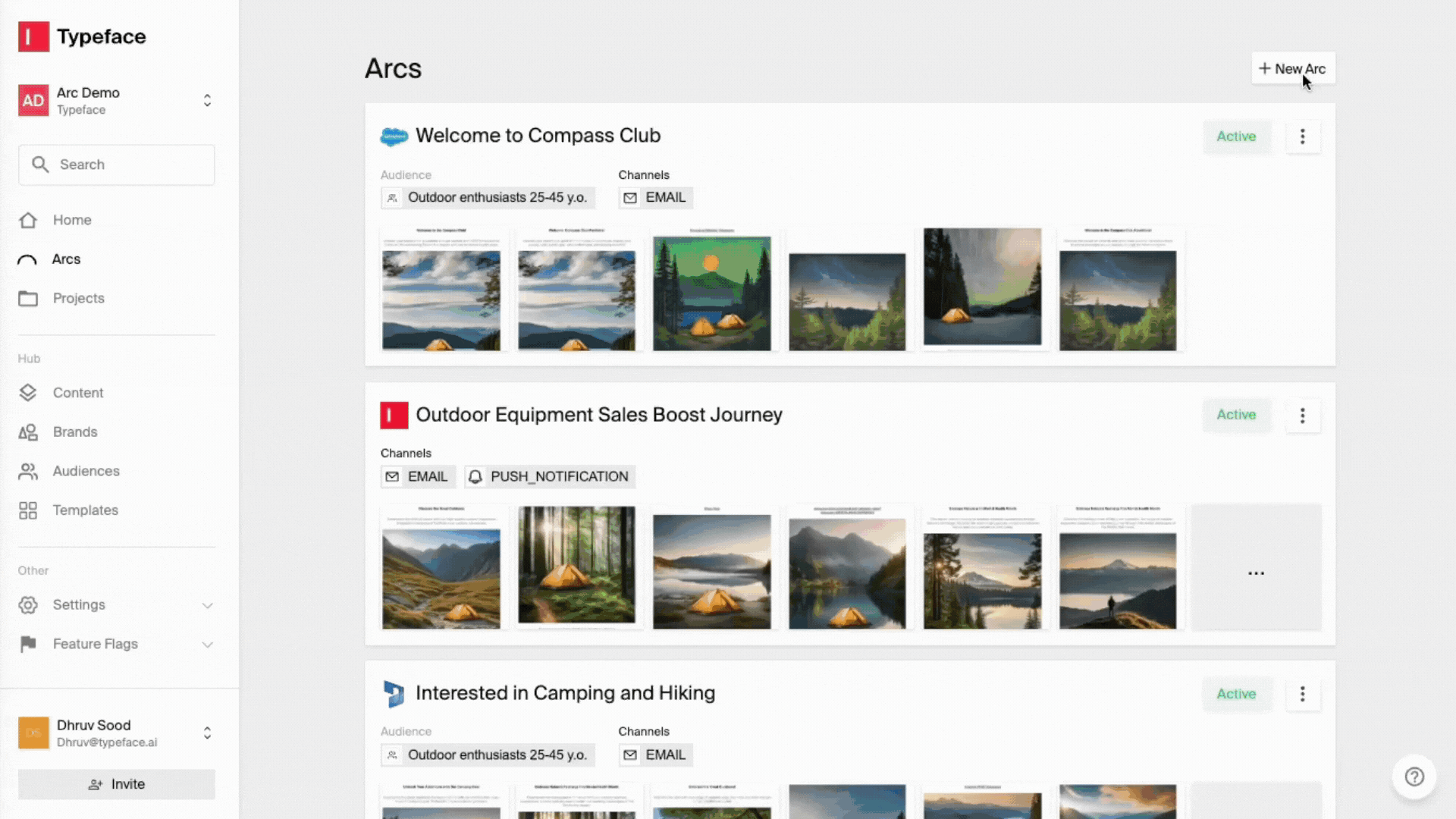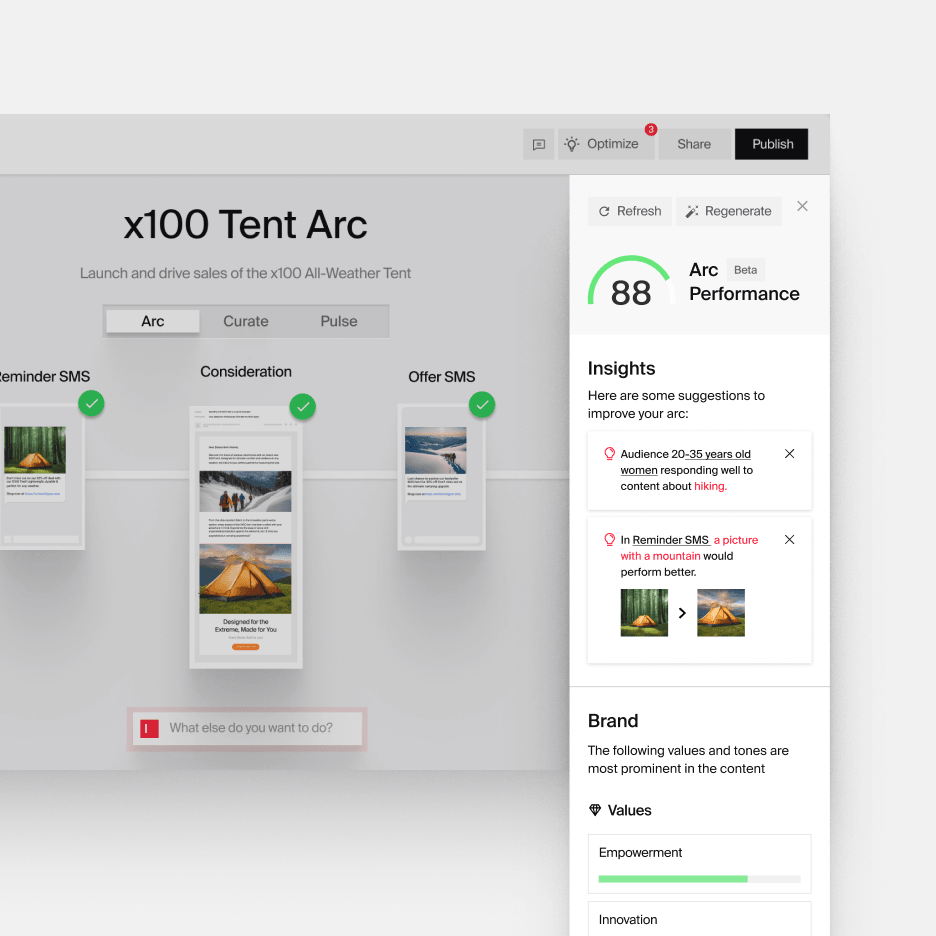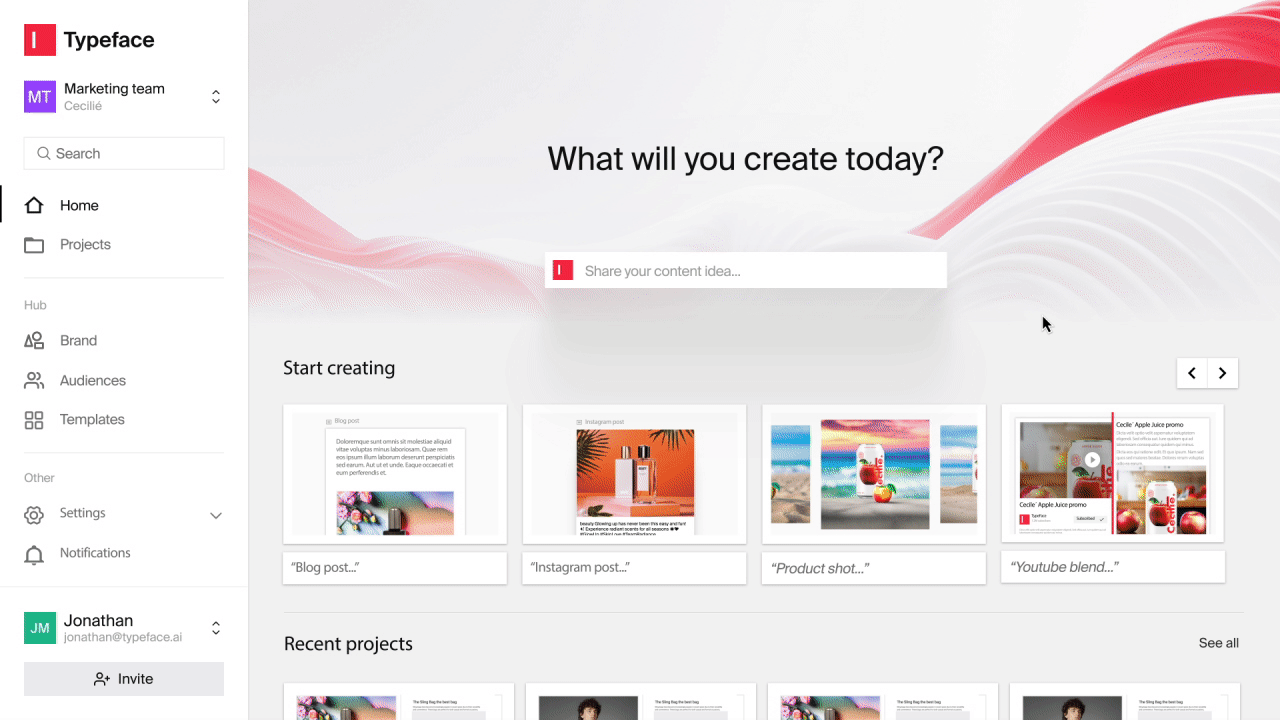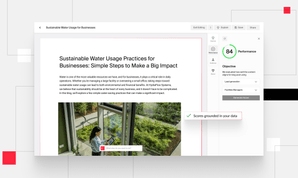AI at Work
What is Customer Journey Mapping? Personalizing Content at Every Touchpoint with AI

Neelam Goswami · Content Marketing Associate
April 8th, 2025 · 10 min read

We've often seen companies burn through millions of dollars in digital marketing campaigns that drive little to no conversions. In most cases, their problem wasn't budget — it was their understanding of the customer journey. The Content Marketing Institute found out that 56% of marketers cited tracking customer journeys as the biggest challenge of B2B marketing. Companies that struggled had been pouring resources into disconnected touchpoints that failed to create a cohesive brand experience, sending generic messages that bounce off potential customers. Every touchpoint felt like a cold call instead of a conversation. Customer journey mapping is the strategic tool that transforms these fragmented interactions into a seamless, personalized narrative at every stage.
With AI now enabling unprecedented levels of content personalization, marketers have an opportunity to not just track customer interactions, but to anticipate and shape their interactions with precision.
What is customer journey mapping?
Stages and elements of a customer journey
Implementation of AI in personalizing content for customer journeys

What is customer journey mapping?
Customer journey mapping is essentially your brand's roadmap, illustrating how customers interact with your services—from discovery to post-purchase. Your customers have different priorities and concerns at different stages of the buying journey. Journey mapping allows you to address these concerns by providing the right content at the right time. For instance, someone who is looking for a solution to their problem needs to discover your brand through informative blogs, social media posts or videos. Someone who is already considering buying your product needs to have their trust reinforced with powerful customer case studies or reports.
By leveraging generative AI platforms like Typeface, marketers can tailor content and interactions to suit specific customer needs, making every touchpoint meaningful and relevant. With AI's predictive and analytical powers, companies can foresee customer behaviors, learn from past interactions and proactively offer solutions that delight customers and propel them toward deeper engagement. Delivering such hyper-personalized content throughout the journey not only enhances customer experiences but also builds trust and loyalty.
Stages and elements of a customer journey
Mapping a customer's journey requires a clear understanding of the different stages they go through when interacting with your brand. The primary stages of the customer journey are awareness, consideration, and decision, accompanied by crucial touchpoints that make or break the customer’s experience.
Key stages: awareness, consideration, decision
Awareness: This is where potential customers first learn about a need or problem. Your brand's goal here is to provide them with relevant information about the challenges they face and establish yourself as a reliable source of knowledge. At this stage, content like blog posts, infographics, newsletters, and educational videos can be highly engaging, capturing interest and initiating trust.
Consideration: Once customers are aware of their needs, they start evaluating different solutions. They look into various offerings, making comparative reviews essential. Content such as detailed guides, webinars, and case studies is valuable, showcasing your unique propositions and differentiating your brand.
Decision: As customers near the final decision, they aim for reassurance that your product or service is the best fit. Providing testimonials, in-depth FAQs, and case studies can address last-minute concerns. Additionally, offers through emails, like free trials or consultations can ease decision-making and encourage purchase.
Importance of customer touchpoints
Customer touchpoints are all the interactions a customer has with your brand during their journey. These include website visits, social media interactions, customer service engagements, and even in-store experiences. Properly managing these touchpoints is crucial to ensure consistent and positive interactions that drive customer satisfaction. Deloitte’s annual report on consumer loyalty, expectations and preferences 2024 says that 73% of customers expect brands to deliver personalized interactions. However, only 60% are happy with the current levels of personalization by brands. Poorly handled touchpoints can disrupt the journey, lead to customer drop-off, and negatively impact loyalty.
Multi-channel experience strategy
A multi-channel strategy involves creating a seamless experience across all channels a customer uses. Customers today quickly switch between devices and platforms, sometimes even engaging multiple touchpoints simultaneously. Therefore, a fluid approach that adapts in real-time to provide consistent brand messaging across platforms is essential. AI can assist in streamlining these efforts, by creating brand-personalized content in various formats across channels to maintain an optimized customer experience.
Implementation of AI in personalizing content for customer journeys
Artificial intelligence is reshaping how businesses approach customer journey mapping, providing new tools for personalization at every touchpoint. By automating data processes, generating customized content, and delivering valuable insights, AI empowers brands to enhance their customer interactions significantly.
AI automation in data collection and analysis
To efficiently map customer journeys, data is paramount. Your customer data will inform your content marketing strategy, and it should be available wherever your team creates content. Using enterprise-grade Customer Data Platforms (CDPs) can help you easily collect and manage customer data to ensure data quality that empowers hyper-personalized brand engagement. Typeface integrates with your CDPs to seamlessly import all your existing customer segments. These audience segments not only inform your marketing team's goals and strategies but can also be applied during AI content generation to personalize the content for different customer preferences.
AI content creation mapped to customer journey
Mapping AI content creation to the customer journey transforms static marketing into dynamic conversations. A enterprise generative AI platform like Typeface can help you create on-brand content for any stage of the customer journey.
Awareness stage
At awareness stages, that is top of the funnel, AI can help create educational content like blog posts that addresses specific pain points before prospects even articulate them. You can enrich your blog posts with relevant and meaningful information using grounded content that can be uploaded to the AI template as files or URLs.
Further, the AI can incorporate specific keywords that you define and personalize the content for your chosen audience segment, ensuring both better search performance and reader experience.

Other features like Generative Refine and Content Explainability can help you improve your content by providing performance scores, actionable improvement suggestions, and feedback loops.
Consideration stage
During consideration stage or middle of the funnel, AI can help you deliver comparison pieces and convincing case studies. Typeface offers several AI templates for transforming and repurposing content that could be useful at this stage.
With Document Transform, for example, you can turn your competitive analysis documents or pitch decks into product comparison articles. Or you could use templates like YouTube Blend and Vimeo Blend to transform customer interviews into compelling case studies or testimonials for social media.

Decision stage
At the decision stage, AI can create bottom of the funnel content such as personalized emails with offers based on customer's purchasing behavior and the journey stage they are in, creating the psychological trigger that converts hesitation into action.
For post-purchase, AI can generate relevant onboarding materials and cross-sell opportunities based on engagement patterns. Typeface can, in fact, generate entire email campaigns for the customer journey with Email Agent.
Typeface Email Agent requires you to only define your goal. Based on your goal, Brand Kit, Audiences and product, Email Agent can generate end-to-end email journeys - from welcome to nurture to special personalized offers.

Typeface Performance Agents also continuously learn from past campaign performance and user feedback to suggest the next best actions for better engagement.

Consistent multi-channel experience throughout the customer journey
Engaging customers across multiple channels is essential, but the real challenge lies in providing a consistent experience throughout their journey. Your customers need to encounter the same brand identity whether they're researching products on your website, scrolling through your social media, or reading your email newsletter.
This consistency reinforces brand recognition and builds trust. When customers receive mixed messages or encounter disjointed experiences, it creates confusion and weakens brand perception. By maintaining coherent messaging, visual elements, and tone across all platforms, you create a seamless experience that strengthens customer relationships and reinforces your core brand values at every interaction point.
Using AI for content creation makes it much easier to maintain brand consistency. On Typeface, you can create a Brand Hub with a multimodal Brand Kit that stores all your essential elements — your image styles, color schemes, logos, text formats, core values, and distinctive voice.

This Brand Kit acts as a filter for all AI-generated content, ensuring everything produced follows your established brand standards. Voices on Typeface allow you to set a unique tone for each channel, be it your unique voice for blogs and social media or your brand’s PR voice for company news and press releases, ensuring that the content sounds true to your brand. This results in content that feels authentic and human. This unified approach helps enterprise teams scale their content production across the customer journey, without sacrificing the brand consistency that's crucial for audience recognition and trust.
Enhance customer experiences with AI
AI implementation in customer journey mapping enhances customer experiences by providing personalized and timely content. AI can analyze customer interactions and predict future behavior, allowing businesses to deliver relevant content at each stage of the journey. This level of personalization not only meets customer needs but also builds trust and loyalty.
By automating content creation and journey orchestration, businesses can efficiently navigate today's ever evolving and demanding customer landscapes, transforming casual browsers into loyal advocates. If you haven't implemented AI into your content workflows yet, Typeface is here to help get you started. Get a demo or Typeface or start free today to witness the transformation first-hand!

Share
Related articles

AI at Work
Content Personalization Best Practices to Personalize Copy for Specific Audiences

Neelam Goswami · Content Marketing Associate
February 12th, 2025 · 16 min read

AI at Work
Orchestrating AI: the Transition From Solo Acts to a Complete Symphony

Abhay Parasnis · Founder and CEO
August 28th, 2024 · 6 min read

Product
Demystifying AI: Bringing Trust and Actionable Insights into Your Content Workflow

Saachi Shah · Product Manager
October 16th, 2024 · 5 min read